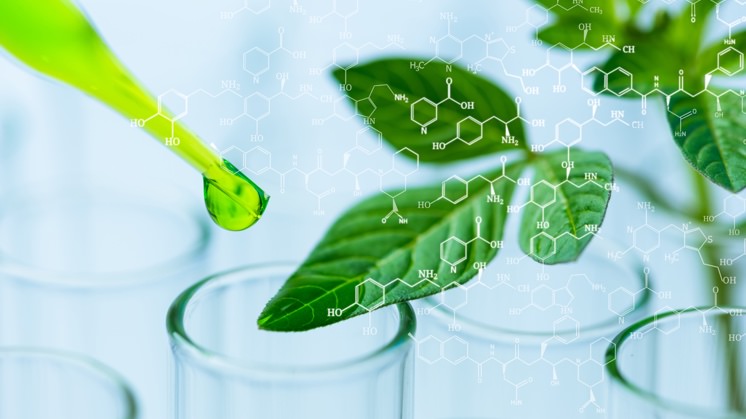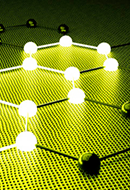What is biotechnology?
Biotechnology and its impact on today's and tomorrow's world
Biotechnology is not a new discipline, but it is advancing by leaps and bounds and it has more and more applications in our day-to-day lives: from pharmaceutical development to food production and the treatment of polluting waste. We explore this exciting field below and try to determine how far it might go in the future.

Although we literally have biotechnology in our genes, it never ceases to amaze us with its continuous innovations, almost more akin to science fiction. The revolutionary spirit of those advances prior to the creation of the term—such as the fermentation of bread, cheese or wine— has remained intact until the present day, more than 6,000 years later, just when human beings are wondering what, if any, are the limits of this technology, that could take us a very long way in the future.
What is biotechnology
Biotechnology uses living cells to develop or manipulate products for specific purposes, such as genetically modified foods. Biotechnology is thus linked to genetic engineering and emerged as a field in its own right at the beginning of the 20th century in the food industry, which was later joined by other sectors such as medicine and the environment.
Today, the five branches into which modern biotechnology is divided — human, environmental, industrial, animal and plant — help us fight hunger and disease, produce more safely, cleanly and efficiently, reduce our ecological footprint and save energy. The increase in investment and employment in this sector has been exponential in recent years, reflecting its growing economic impact and its key role in sustainable development and technology innovation at a global level.
The evolution of biotechnology over the last century
- 2024
- 2022
- 2020
- 2013
- 2010
- 1998
- 1997
- 1983
- 1963
- 1953
- 1943
- 1928
- 1919
Uses and applications of biotechnology
Biotechnological innovations are already part of our daily lives and we find them in pharmacies and supermarkets, among many other places. In addition, they were of key importance during the fight against the COVID-19 pandemic as they helped decipher the genome of the virus and in understanding how our body's defence mechanism works against infectious agents.
Biotechnology will therefore play a crucial role in the society of the future in preventing and containing potential pathogens. But this is just one of its many applications... Below, we review some of the most relevant in different fields:
 Medicine
Medicine
The development of insulin, the growth hormone, molecular identity and diagnostics, gene therapies and vaccines such as hepatitis B are some of the milestones of biotechnology and its alliance with genetic engineering. In addition, it is also used in the diagnosis of diseases due to its ability to perform very complicated tests in a shorter time and at lower cost.
 Industry
Industry
The revolution of the new smart materials hand-in-hand with biotechnology has only just begun, with the main advantage that it can make easily degradable products. Such products help the environment because they generate less waste at the time of destruction, as is the case with biodegradable plastics.
 Food
Food
In addition to the genetically modified foods mentioned above, thanks to biotechnology products such as WEMA have been created, a type of crop resistant to droughts and certain insects that may prove essential in fighting hunger in Africa.
 Environment
Environment
Through bioremediation processes, very useful for ecological recovery, the catabolic properties of microorganisms, fungi, plants and enzymes are used to restore contaminated ecosystems.

Food sustainability
A sustainable diet reinforces our commitment to the environment.

Renewable energies in agriculture
Coexistence between crops and renewable installations is becoming increasingly widespread

Smart materials
There are different types of smart materials and new ones arise every day.
Types of biotechnology
Like the stripes of the rainbow, the different biotechnology applications are grouped generally into seven colours or research and development areas. In this section, we highlight the most relevant of each of them.
-
Red biotechnology. This is the health branch and responsible, according to the Biotechnology Innovation Organization (BIO), for the development of more than 250 vaccines and medications such as antibiotics, regenerative therapies and the production of artificial organs.
-
Green biotechnology. It is used by more than 13 million farmers worldwide to fight pests and nourish crops and strengthen them against microorganisms and extreme weather events, such as droughts and frosts.
-
White biotechnology. The industrial branch works to improve manufacturing processes, the development of biofuels and other technologies to make industry more efficient and sustainable.
-
Yellow biotechnology. This branch is focused on food production and, for example, it carries out research to reduce the levels of saturated fats in cooking oils. Its main function is to genetically improve products so that there is a higher quantity or quality of food
-
Blue biotechnology. This exploits marine resources to obtain aquaculture, cosmetics and health care products. At the environemntal level, the aim is to preserve marine species and ecosystems. In addition, it is the branch most widely used to obtain biofuels from certain microalgae.
-
Grey biotechnology. Its purpose is the conservation and restoration of contaminated natural ecosystems through, as mentioned above, bioremediation processes.
-
Gold biotechnology. Also known as bioinformatics it is responsible for obtaining, storing, analysing and separating biological information, especially that related to DNA and amino acid sequences.
To these typologies, four further sub-categories with corresponding colours have more recently been added:
-
Brown biotechnology. This comes from green biotechnology with the aim of taking advantage of arid and desert soils to include highly resistant plant species that increase the flora and biodiversity of these environments.
-
Purple biotechnology. It deals with the legal study of the very aspects of this science. They are closely related to intellectual property, patents and the biosafety of processes involving living organisms.
-
Orange biotechnology. This includes the dissemination of information of interest to the other branches. t is carried out both in the fields of education and scientific dissemination with new advances in biotechnologies.
-
Black biotechnology. This includes all research work on micro-organisms that can be manipulated to attack human health. Its main activities are related to biological warfare and bioterrorism.
Advantages and disadvantages of biotechnology
The benefits of biotechnology are tangible, but at the same time some warn of its possible adverse effects on the environment, health and ethics. The advantages of BIO are as follows:
It reduces CO2 emissions by 52 %, optimises the use of water and reduces waste and chemical processes thanks to techniques such as recombinant DNA.
It improves medical diagnosis, reduces infection rates, minimises the side effects of medications and favours progress in developing countries.
It favours healthy and sustainable agriculture — it provides more nutritious, toxin and allergen-free food — — it limits the use of pesticides and chemicals —.
Helping to reduce poverty and hunger: One of the objectives of biotechnology is to enable more land to be cultivated and more food to be produced.
Its main risks include:
-
The proliferation of laboratory foodscould end crop diversity. It may also affect the balance of ecosystems.
-
The risks include unforeseen allergies, poisoning of living organisms and modified bacteria escaping from a laboratory.
-
Cloning, the modification of the human genome and assisted reproduction are matters of ethical debate and social controversy.
- Decrease in labour and small farmers. Increased yields mean that fewer workers are needed and the high cost prevents smaller landowners from taking advantage of the benefits.


















